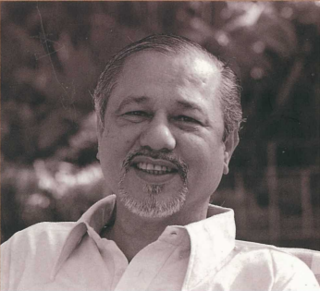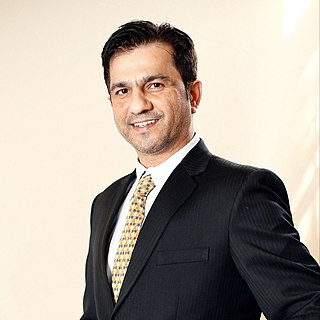Shreepur is a village in Malshiras Taluka in the Solapur District of Maharashtra, India.
Shreepur is a village in Malshiras Taluka in the Solapur District of Maharashtra, India.
Shreepur is located at 18°10′0″N73°51′0″E / 18.16667°N 73.85000°E . [1] It has an average elevation of 493 metres. It comes under Mahalung Panchayath. It belongs to Desh or Paschim Maharashtra region. It belongs to Pune Division. It is located 104 km towards west from District headquarters Solapur. 18 km from Malshiras. 315 km from State capital Mumbai. [2]
Marathi is the local Language of Shreepur. BJP and NCP are the major political parties in this area.[ citation needed ]
The present day village was originally part of the Bhor State, and called Mahalung. In 1935, Chandrashekhar Agashe started employing farmers in the village for the Brihan Maharashtra Sugar Syndicate Ltd. [3] He began construction for the first factory in April 1938, and finally established the syndicate's first sugar cane processing factory in the village in March 1939, [4] selling the sugar under the trademark Shree, the village panchayat of Mahalung changed the village's official name to Shreepur. [4]
Bhor is a town and a municipal council in Pune district in the state of Maharashtra, India.

The Raja Dinkar Kelkar Museum is in Pune, Maharashtra, India. It contains the collection of Dr. Dinkar G. Kelkar (1896–1990), dedicated to the memory of his only son, Raja. The three-storey building houses various sculptures dating back to the 14th century. There are also ornaments made of ivory, silver and gold, musical instruments, war weapons and vessels.

Nutan Marathi Vidyalaya (NMV) is one of the oldest schools in Pune, Maharashtra, India. The school was founded by the Shikshan Prasarak Mandali, an educational charity, on 1 January 1883. The school has a secondary school section for students in grade five to ten and a junior college for students in grade eleven and twelve.

Brihan Maharashtra College of Commerce is a college in Pune, Maharashtra, India. The college was established in 1943 by the Deccan Education Society. It is affiliated to Savitribai Phule Pune University.

Bapu Gokhale was army chief (Senapati) of the Marathas in the Third Anglo-Maratha War.
Agashe is a surname used by Chitpavan Brahmins of the Kaushik gotra in the Marathi-populated Deccan in India and by the Chitpavan Brahmin diaspora across the globe.
MVM's Panditrao Agashe School or Panditrao Agashe School, is a private, co-educational day school located at Law College Road in Pune, India. The institution is a part of the Maharashtra Vidhya Mandal. Maharashtra Vidhya Mandal was founded in 1957. He was one of the first Maharashtrian in Pune to start an English Medium School. He is also renowned for his English into Marathi and Marathi into English dictionaries. The school caters to pupils from kindergarten up to class 10 and the medium of instruction is the English language. The school is affiliated to the Maharashtra State Board of Secondary and Higher Secondary Education, Pune which conducts the SSC Examinations at the close of class 10. The school is divided into three sections viz. pre-primary, primary and secondary.

Dnyaneshwar Chandrashekhar Agashe was an Indian businessman, cricketer, cricket administrator and philanthropist. He is best remembered for founding the Suvarna Sahakari Bank in 1969, and the scandal following the bank's alleged scam case in 2008. He played first-class cricket for Maharashtra between 1962 and 1968, and served as managing director of the Brihan Maharashtra Sugar Syndicate from 1986 to 1996. He was twice elected vice president of Board of Control for Cricket in India, serving his second and final term from 1995 to 1999.

Ashutosh Dnyaneshwar Agashe is an Indian cricket player and businessman. He played the Ranji Trophy for the Maharashtra cricket team from 1996 to 1999. He has served as the managing director of Brihan Maharashtra Sugar Syndicate Ltd. since 1996.
The Brihan Maharashtra Sugar Syndicate Ltd. is an Indian sugar company headquartered in Pune, Maharashtra, India. Established in 1934, it is one of the oldest companies in India.

Chandrashekhar Govind Agashe was an Indian industrialist and lawyer, best remembered as the founder of the Brihan Maharashtra Sugar Syndicate Ltd. He served as the managing agent of the company from its inception in 1934 till his death in 1956. He served as the President of the Bhor State Council from 1934 to 1948, having previously been the council's Vice President from 1933 to 1934, its Secretary from 1932 to 1933, and the Chief Justiciar of the Indian princely state itself from 1920 to 1932.
Mangdari is a village in Velhe Taluka in the Pune District of Maharashtra, India.

Ram Vitthal Satpute is National Vice President of BJYM and a Member of Maharashtra Legislative Assembly elected from Malshiras.
Jagdish "Panditrao" Chandrashekhar Agashe was an Indian industrialist, best remembered for succeeding his father Chandrashekhar Agashe as the joint managing director of the Brihan Maharashtra Sugar Syndicate Ltd. from 1970 to 1978. The Panditrao Agashe School in Pune is named in his honour.

Mandar Dnyaneshwar Agashe is an Indian businessman, music director, and former musician. Best known for having founded Sarvatra Technologies in 2000, he was one of the directors implicated in Suvarna Sahakari Bank's alleged scam case in 2008. He is also known for his 1998 hit single Nazar Nazar.

Sheetal Dnyaneshwar Agashe is an Indian businesswoman and former actress, who has served as managing director of Brihans Natural Products since 2013, for which she has received various accolades, including a Times Visionary Award, a Femina Pune's Most Powerful Award, and two Times Women of the Year Awards. A former actress, she had a recurring role from 1999 to 2003 on the sitcom Yes Boss (1999–2009), and a leading role in the independent film Minus One (2005).
Nandan Hanmant Phadnis is an Indian cricketer who played first class from 1986 to 1992 and List A cricket from 1986 to 1996 at the Ranji Trophy and the Wills Trophy for the Maharashtra cricket team as a wicket-keeper and batsman. Since 1998, he has served as an umpire for List A and Twenty20 cricket.
Shakuntala Bhupendra Karandikar was an Indian biographer and philanthropist, best remembered for writing the Marathi biography of her father Chandrashekhar Agashe titled Vishwasta (1992), and her advocacy and philanthropy towards women's causes in Dahanu.
Raghuveer Bharam is an Indian painter of oil paintings of portraits, mythological themes, and figurative art. His best known portrait of Vasantrao Deshpande was painted in 1980 from a prior photograph, and subsequently hung at the Vasantrao Deshpande Memorial Hall in Nagpur from 1990, before needing critical restoration from Bharam in 2013. A student of the Gurukul painting method under Gopal Deuskar, his works have been adapted into book covers and exhibited at the Darpan Art Gallery.